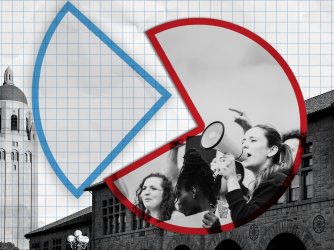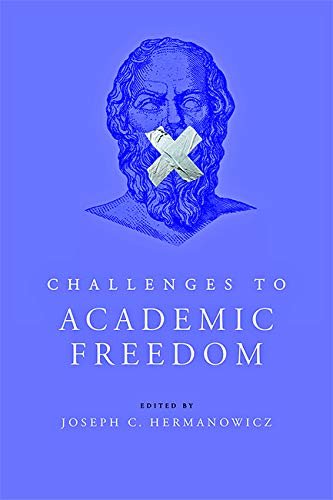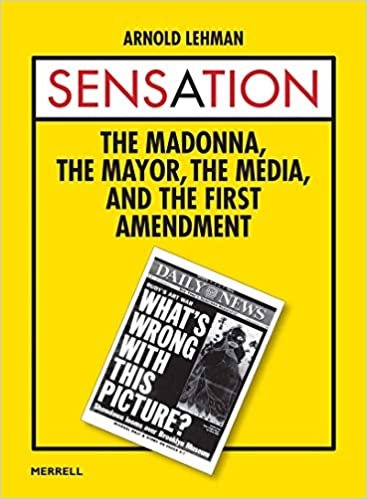Table of Contents
First Amendment News 291: Bruce Johnson responds to Judge Laurence Silberman’s attack on NYT v. Sullivan
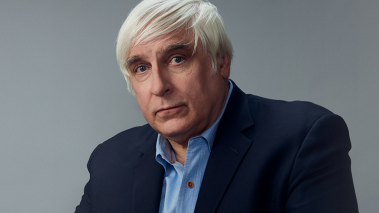
Bruce Johnson (Davis Wright Tremaine)
Last week the United States Court of Appeals for the District of Columbia handed down its ruling in Tah v. Global Witness Publishing, Inc. The case involved a defamation action in which two former Liberian officials alleged that Global Witness, an international human rights organization, published a report falsely implying that they had accepted bribes concerning the sale of an oil license for an offshore plot owned by Liberia. The district court dismissed the complaint for failing to plausibly allege actual malice.
Rodney A. Smolla argued on behalf of the appellants and Chad R. Bowman argued the cause for appellees. By a 2-1 vote, the Court, per Judge David S. Tatel (with Judge Sri Srinivasan joining), affirmed the district court’s dismissal of the complaint, as well as its denial of the anti-SLAPP motion. Senior Circuit Judge Laurence Silberman dissented and in the process took issue, among other things, with the New York Times v. Sullivan precedent.
Given Judge Silberman's bold dissent, I invited Bruce E.H. Johnson, a noted First Amendment lawyer and partner at Davis Wright Tremaine (Seattle office), to respond. An invitation was also emailed to Judge Silberman to reply if he so elected. The Johnson reply, as he titled it, is set out below.
It’s Sedition Act Groundhog Day Again:
Reflections on Judge Silberman’s Wingnut Rant
by Bruce E. H. Johnson
It is a peculiar curse of American jurisprudence that the constitutionality of the 1798 Sedition Act continues to be a lively topic of judicial dispute. Enacted by a Federalist-controlled Congress and White House to punish newspaper critics (of the President and Congress, but not the Vice President, who supported the opposition party) and immediately repudiated by the incoming Jefferson administration in 1801 when the law automatically expired, the Sedition Act ripped through the newly-partisan press in the early years of the Republic, prompting indictments and prosecutions of pro-Jefferson printers in several cities across the United States.
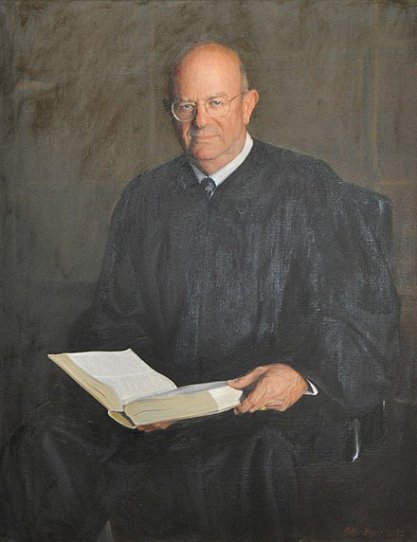
The 1790s have proved to be a recurrent touchstone for later generations because the Sedition Act controversies clearly offered valuable insights into the First Amendment views of the Founding generation. Did “no law” really mean “no law,” for example? For originalists, of course, these disputes are catnip.
Modern American libel law rests on this historical foundation. In 1964, writing for the Court in New York Times v. Sullivan, Justice Brennan decisively repudiated the old statute: “Although the Sedition Act was never tested in this Court the attack upon its validity has carried the day in the court of history. . . . These views reflect a broad consensus that the Act, because of the restraint it imposed upon criticism of government and public officials, was inconsistent with the First Amendment.” The Court reversed a libel judgment issued against a newspaper and several civil rights leaders by Alabama public officials who had commandeered the state’s tort laws to punish critics of the Jim Crow governmental structures that maintained and preserved white supremacy in the South.
Thereafter, other than the ravings of candidate Trump in 2016 — “I’m going to open up our libel laws so when they write purposely negative and horrible and false articles, we can sue them and win lots of money. We’re going to open up those libel laws. So when The New York Times writes a hit piece which is a total disgrace or when The Washington Post, which is there for other reasons, writes a hit piece, we can sue them and win money instead of having no chance of winning because they’re totally protected.”— it appeared that, on this point, Sullivan was settled law, even for originalists.
Indeed, in a 2010 article in Iowa Law Review, Eugene Volokh, the UCLA law professor, reviewed originalist data and concluded that the available evidence confirmed that the Founding generation “took for granted that civil liability was subject to constitutional restraints, and I know of no source that took the contrary view.” The core premise of Sullivan was solid.
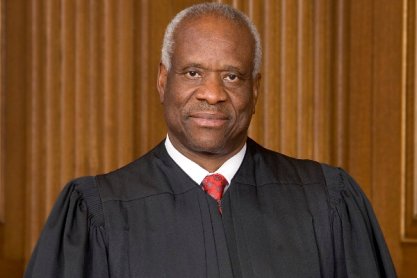
Originalism revised: Enter Justice Thomas
But, in February 2019, Justice Thomas, the leading self-proclaimed originalist on the Supreme Court, triggered shock and surprise among First Amendment lawyers when he wrote a concurring opinion in McKee v. Cosby, an appeal involving dismissal of libel claims against disgraced comedian Bill Cosby, suggesting that New York Times v. Sullivan, with its expansive views of First Amendment protections and its heavy criticism of the 1798 Sedition Law, was wrongly decided, and had no basis in the Constitution as it was understood by the people who drafted and ratified it: “New York Times and the court’s decisions extending it were policy-driven decisions masquerading as constitutional law,” he said.
Enter the modern-day historians
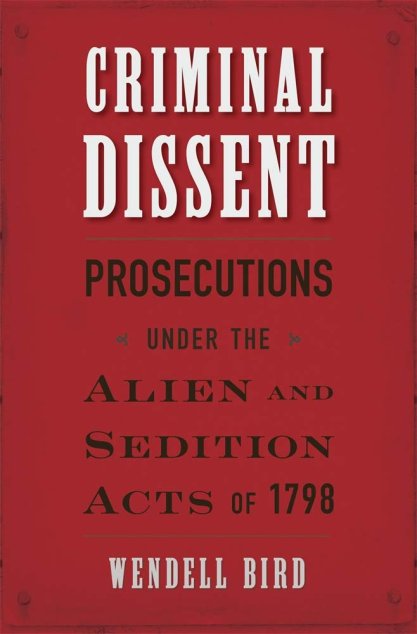
Even before Justice Thomas, Sedition Act disputes had drawn in legal historians, beginning with Leonard Levy in 1960 (whose initial pessimism about the Founders’ “legacy of suppression” gradually dissolved as he learned more about the breadth of resistance to the federal and state prosecutions of printers in the 1790s and early 1800s) and more recently Yale’s Wendell Bird. In his 2016 book, "Press and Speech under Assault: The Early Supreme Court Justices, the Sedition Act of 1798, and the Campaign against Dissent," he showed that members of the Supreme Court during the Founding Era in fact took an expansive view of First Amendment protections, and were divided over the constitutionality of Sedition Act prosecutions. Then in his 2020 book "Criminal Dissent: Prosecutions under the Alien and Sedition Acts of 1798," he concluded that historical evidence does “not support the view . . . that the founding generation uniformly believed the First Amendment’s protections of press and speech were narrow.” In other words, even applying originalist analysis, Justice Thomas was wrong.
Another scholar responding to Justice Thomas’s attacks, Matthew Schafer, a media lawyer who teaches at Fordham Law School, has also researched and published extensively on these originalist issues of First Amendment interpretation. His conclusion: “[I]t turns out that the historical record when it comes to the common law of libel is not nearly as unequivocal as Thomas would have us believe — in almost every way. Indeed, the historical record contains substantial evidence supporting the rule adopted in Sullivan.” His research, Schafer concluded, in fact, shows that “opposition to the Sedition Act, within a decade of the ratification of the First Amendment, is some of the best evidence of what the Founders meant when they spoke of freedom of the press and its relationship to the criticism of public officials . . . As the Supreme Court correctly found in Sullivan, the opposition to the Sedition Act ‘first crystallized a national awareness of the central meaning of the First Amendment.'”
An unusual feature of Sedition Act legal battles was the ugly intrusion of partisan loyalties into the federal judiciary. Indeed, the sharp and sudden rise of the American two-party system, unanticipated by the Constitution’s draftsmen, transformed some federal judges (appointed by Federalists) into fits of partisan rage. The poster child was Justice Samuel Chase, who presided over some of the most controversial cases of the Adams administration, including the sedition trial of James Callender, the Richmond scandal-monger. In another case, dismayed that Jeffersonians in Maryland had established universal male suffrage, Chase told a group of grand jurors that “the country . . . [was] headed down the road to mobocracy, the worst of all popular governments” and that, if left in power, Jefferson’s party would eliminate “all security for property, and personal liberty.” The “modern doctrine . . . that all men in a state of society are entitled to equal liberty and equal rights,” Chase warned the jurors, will bring “mighty mischief upon us.” He was later impeached and, in a Senate trial presided over by Aaron Burr, acquitted (on a party-line vote).
Another judge of the Federalist era, Judge John Pickering of New Hampshire, was also the target of impeachment proceedings during the Jefferson Administration, with the House of Representatives charging that his behavior on the bench was often marked with “ravings, cursings, and crazed incoherences” brought on by alcoholism and growing mental instability.
Echoing Thomas & then some: Judge Silberman's dissent
This brings us finally to Circuit Judge Laurence Silberman, an 85-year-old Reagan appointee, and his wild dissenting opinion issued on March 19, 2021, in Tah v. Global Witness Publishing, Inc., which involved the appeal of a dismissal of an unsuccessful libel case involving allegations that two officials from the African nation of Liberia had accepted bribes in connection with the sale of an oil license to ExxonMobil.
Mostly, it is a fact-free wingnut rant masquerading as a judicial opinion. For example, although of no relevance to the legal issues in the appeal, Judge Silberman asserted that The New York Times and The Washington Post “are virtually Democratic Party broadsheets. And the news section of The Wall Street Journal leans in the same direction.” Also leaning in that direction, he said, are The Associated Press “and most large papers across the country (such as the Los Angeles Times, Miami Herald, and Boston Globe).” Plus, Judge Silberman added, “Nearly all television — network and cable — is a Democratic Party trumpet. Even the government-supported National Public Radio follows along.” He also attacked Silicon Valley, which he said “similarly filters news delivery in ways favorable to the Democratic Party.”
Of course, in the 1790s, partisan newspapers (at least of the pro-Jefferson sort) enraged many Federalist judges who were charged with enforcement of the Sedition Act, so Judge Silberman’s partisan rage has deep historical roots. Digging through the dissenting opinion’s diatribes, however, is this legal gem:
I am prompted to urge the overruling of New York Times v. Sullivan. Justice Thomas has already persuasively demonstrated that New York Times was a policy-driven decision masquerading as constitutional law. See McKee v. Cosby (2019) (Thomas, J., concurring in denial of certiorari). The holding has no relation to the text, history, or structure of the Constitution, and it baldly constitutionalized an area of law refined over centuries of common law adjudication. See also Gertz v. Robert Welch, Inc., 418 U.S. 323, 380–88 (1974) (White, J., dissenting). As with the rest of the opinion, the actual malice requirement was simply cut from whole cloth. New York Times should be overruled on these grounds alone.
In parroting Justice Thomas, Silberman fails to consider or address any of the current scholarship addressing the Sedition Act controversy, which confirms Justice Brennan’s views.
For First Amendment lawyers and scholars, the Silberman opinion threatens more attacks on a fundamental principle embraced by the courts since 1964 (and even earlier, as legal scholarship has confirmed). And, this leads to the obvious fear: With the Trumpification of the federal judiciary, will we see more such attacks in the future?
Related
- Ruth Marcus, "Trump’s attacks on the press were bad. What this federal judge did was worse," The Washington Post (March 21)
- First Amendment News 277: "Contra-Justice Thomas, the originalist debate continues — a review of Wendell Bird’s ‘Criminal Dissent’" (Nov. 11, 2020)
- First Amendment News 275: "Justice Thomas urges Court to pare back Section 230’s ‘sweeping immunity’" (Oct. 21, 2020)
- First Amendment News 274: "More on originalism and the First Amendment, enter Matthew Schafer" (Oct. 7, 2020)
- First Amendment News 254: "Ian Millhiser on Justice Thomas’s maverick views on modern free speech jurisprudence" (May 13, 2020)
- Levine & Wermiel, “Dubious Doubts and ‘the Central Meaning of the First Amendment’—A Preliminary Reply to Justice Thomas,” First Amendment Watch (March 1, 2019)
Senate Judiciary holds hearing on 'dark money' and Supreme Court
This from Kalvis Golde over at SCOTUSblog:
Sen. Sheldon Whitehouse has been talking about anonymous political donations and the Supreme Court for a long time. Now, Whitehouse is using his new position as the chair of a key Senate subcommittee to bring more attention to the issue. The senator on Wednesday held the first in a series of hearings to investigate whether large political donations are exerting undue influence on Supreme Court nominations and decisions, provocatively titled “What’s Wrong with the Supreme Court: The Big-Money Assault on Our Judiciary.”
In his opening remarks, Whitehouse, D-R.I., contended that a “multi-hundred million dollar covert operation” influences conservative Supreme Court justices at three stages. First, a “gatekeeping organization” Whitehouse didn’t name (which witnesses later identified as the Federalist Society) grooms potential nominees for vacancies on the bench. Second, advocacy groups lobby for votes to confirm a chosen nominee in the Senate. And third, law firms and interest groups — allegedly with the same anonymous backers as the gatekeeper and advocacy groups — file amicus briefs urging the court to decide cases for the benefit of corporate interests.
The problem is not one of partisanship, Whitehouse said, noting that “in recent years Democratic dark money has caught up” to similar backing of Republican efforts. Rather, the issue is transparency. “Dozens of anonymously funded legal organizations have sprung up,” Whitehouse claimed, and the lack of any requirements for donor disclosure means the public – and the justices – cannot know when the same sources that supported a justice’s confirmation might be backing the legal team behind a party, or amicus, in a given case.
Cert. petition: Video game characters and veterans’ benefits
This from Andrew Hamm over at SCOTUSblog:
This week we highlight cert petitions that ask the Supreme Court to consider . . . when the First Amendment protects a video game’s digital image of someone else’s likeness without that person’s consent and when the effective date for a veteran’s award for disability benefits begins.
Lenwood Hamilton is a former professional football player and wrestler. His likeness also appears as a fictional character in the video game “Gears of War.” Hamilton sued the game company and other defendants for violating his right of publicity. In response, the defendants claimed the protection of the First Amendment.
The U.S. Court of Appeals for the 3rd Circuit resolved the dispute using the “transformative use” test. Recognizing that Hamilton and the character have the same skin colors, facial features, hairstyles, builds and voices, the 3rd Circuit nevertheless noted differences in personality and profession (Hamilton has never served in the military or fought aliens) that rendered Hamilton’s likeness “so transformed that it has become primarily the defendant’s own expression.” Among the arguments in his petition, Hamilton maintains that the 3rd Circuit’s expansive test could allow “shoot-em-up” games involving the Dalai Lama or CGI pornographic films of famous actresses. The case is Hamilton v. Speight.
Sidney Powell raises First Amendment defense in $1.3 billion lawsuit
- Jan Wolfe, "Ex-Trump lawyer Powell asks judge to toss voting machine company's $1.3 billion lawsuit," Reuters (March 22)
Sidney Powell, a lawyer who advised President Donald Trump's campaign, asked a judge on Monday to throw out a $1.3 billion lawsuit accusing her of spreading false conspiracy theories about the November presidential election.
Powell said in a filing in federal court in Washington that there was a 'no basis' for the lawsuit brought by Dominion Voting Systems Inc in January.
Powell, represented by three lawyers, argued that claims she made about Denver-based Dominion were protected by the right to free speech under the First Amendment . . . .
She said her claims about Dominion were meant to be hyperbolic, and that "reasonable people would not accept such statements as fact but view them only as claims that await testing by the courts through the adversary process."
- Defendant's motion to dismiss (also argues that court lacks jurisdiction to hear the case)
Volokh on free speech and the perils of adjunct law school teaching
From The Volokh Conspiracy:
. . . I wouldn't generally recommend adjunct teaching: Any sufficiently controversial statement, in class or out, can lead to a firestorm of accusations of bigotry, prompt denunciation and firing by the dean, and huge risk to your day-job career. Of course, precisely because the job pays so little, the firing by itself won't cost much (though it would doubtless leave a sour taste). But the news coverage, I think, can be professionally and economically devastating, especially since the coverage won't focus just on the accusations by the students, but the endorsement of those accusations by the law school administration.
National Constitution Center to be new home of 50-ton First Amendment stone tablet
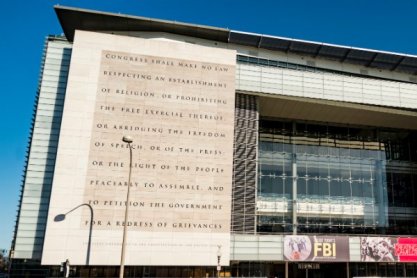
This news item from the Associated Press:
A four-story, 50-ton marble tablet engraved with the text of the First Amendment, previously displayed on the facade of the now-shuttered Newseum in Washington, will find a new home in Philadelphia across from Independence Hall.
The National Constitution Center, which sits in an area of the city billed as America's most historic square mile, will erect the tablet in an atrium overlooking Independence Hall . . . .
The tablet is engraved with the First Amendment, which protects freedom of speech, press, religion, assembly and the right to petition the government. It's a gift from the Freedom Forum, the creator of the Newseum, a museum dedicated to the First Amendment. The museum was sold to Johns Hopkins University and closed in 2019.
- Shout out: "The redesign and installation of the tablet at the National Constitution Center is being supported by a gift from J. Michael Luttig and Elizabeth A. Luttig."
Forthcoming book on academic freedom
- Joseph C. Hermanowicz, editor, "Challenges to Academic Freedom" (Johns Hopkins University Press (Nov. 23, 2021)
Academic freedom is an idea so closely associated with academic work—at least in the West—that it assumes a defining characteristic of the academic profession. Yet it is under recurring threat. Confusion endures about what professors have a defensible right to say or publish, particularly in extramural forums like social media. At least one source of the confusion in the United States is the way in which academic freedom is often intertwined with a constitutional freedom of speech. Though related, the freedoms are distinct.
In Challenges to Academic Freedom, Joseph C. Hermanowicz argues that, contrary to many historic views, academic freedom is not static. Rather, we may view academic freedom as a set of relational practices that change over time and place. Bringing together scholars from a wide range of fields, this volume examines the current conditions, as well as recent developments, in the status of academic freedom in the United States. Authors consider topics such as
- the sources of recurring threat to academic freedom;
administrative interference and overreach;- the effects of administrative law on academic work, carried out under the auspices of Title IX legislation, diversity and inclusion offices, research misconduct tribunals, and institutional review boards;
- the tenuous tie between academic freedom and the law, and what to do about it;
- the highly contested arena of extramural speech and social media; and
- academic freedom in a contingent academy.
Adopting varied epistemological bases to engage their subject matter, the contributors demonstrate perspectives that are, by turn, case study analyses, historical, legal-analytic, formal-empirical, and policy oriented. Traversing such conceptual range, Challenges to Academic Freedom demonstrates the imperative of academic freedom to producing outstanding scholarly work amid the concept's entanglements in the twenty-first century.
Contributors: Patricia A. Adler, Peter Adler, Timothy Reese Cain, Dan Clawson, Joseph C. Hermanowicz, Philip Lee, Gary Rhoades, Laura Stark, John R. Thelin, Hans-Joerg Tiede, Gaye Tuchman, Stephen Turner, Eve Weinbaum
Related
- Eugene Volokh, "Academic Freedom Alliance Statement on the University of San Diego Law School / China Controversy," The Volokh Conspiracy (March 22)
Forthcoming book: Ross on official lying and the First Amendment
- Catherine J. Ross, "A Right to Lie?: Presidents, Other Liars, and the First Amendment," University of Pennsylvania Press (August 27, 2021) (Do the nation's highest officers, including the President, have a right to lie protected by the First Amendment? If not, what can be done to protect the nation under this threat? This book explores the various options.)
Forthcoming book: The mayor, the media & the First Amendment
- Arnold Lehman, "Sensation: The Madonna, The Mayor, The Media, and the First Amendment" (Merrell Publishers, Sept. 7, 2021)
Death and bomb threats over an art exhibition! A major battle with the mayor of New York City and the New York Times! Looking back, Arnold Lehman, director of the Brooklyn Museum, and his colleagues were not prepared for what was to happen.
No one could have anticipated that SENSATION: Young British Artists from the Saatchi Collection would become the biggest art story in the history of art history. It has taken him two decades to fully absorb and clearly reflect on what happened at the Brooklyn Museum in 1999–2000. The intense controversy swept the exhibition, the museum, and Chris Ofili’s The Holy Virgin Mary painting to international attention for six months. While 175,000 people saw the exhibition and millions read and heard about it daily, they never knew of the threats and challenges that kept the museum staff awake at night. Mayor Rudy Giuliani, who never saw the painting, focused his rage at The Holy Virgin Mary; rescinded the museum’s municipal funding to force it to close the exhibition; and attempted to evict it from its hundred-year-old landmark. The city’s most conservative media and ultra-religious groups inflamed the conflict.
SENSATION, selected from controversial collector Charles Saatchi’s contemporary British art collection, was first shown at London’s Royal Academy in 1997, to an outcry over the portrait of child murderer Myra Hindley. Its opening at the Brooklyn Museum in 1999 drew tabloid headlines such as “B’klyn gallery of horror―Gruesome museum show,” and “Butchered animals, a dung-smeared Mary and giant genitalia.” The New York Times accused the museum of wrongdoing in high-profile but often false and inaccurate investigative reports, most dismissed earlier by the court. In a story as gripping as a fictional thriller, the mayor and city eventually settled with the museum, awarding it a permanent injunction, the restoration of city money, and substantial funds for its new entrance.
University Press of Kansas' future is uncertain
This from Colleen Flaherty over at Inside Higher Ed:
The University Press of Kansas wrote to its authors this week to say that its trustees “have initiated an independent review to propose direction for the press’s future amid significant financial challenges.” Richard Clement, former dean of the College of University Libraries and Learning Sciences at the University of New Mexico, was hired as an external consultant to complete that review by March 1. “The trustees will then decide how or if the press will continue to operate,” the note said.
The university did not immediately respond to a request for comment. Last week, it said it couldn’t rule out using a new Kansas Board of Regents policy making it easier to fire tenured faculty members. State universities are currently facing a 5.5 percent budget cut. Joyce Harrison, the press’s editor in chief, said she and her staff weren’t making public statements at this time.
New scholarly articles
- Kellin Tompkins, "Dismantling The Professional Student Political Speech Minefield: Rejecting The Proliferation of Conduct Standards That Restrict Political Expression," SSRN (Feb. 4)
- Xenna Davis, "Your Shirt or Your Vote: Why Texas’s Electioneering Law Unconstitutionally Infringes on Voters’ Freedom of Speech," SSRN (Feb. 4)
- Alan Chen, "Free Speech, Rational Deliberation, and Some Truths About Lies," William & Mary Law Review (2020)
- Oliana Luke, "Sonograms & Speech: Informed Consent, Professional Speech, and Physicans' First Amendmeent Rights," Washington Law Review (2020)
More in the news
- Jazmin Goodwin, "Trump is returning to social media in a few months with his own platform, spokesman says," CNN (March 22)
- Bobby Caina Calvan, "Fla. House OK's campus 'viewpoint diversity' measure," Associated Press (March 20)
- Greg Lukianoff, Ryne Weiss, & Adam Goldstein, "Catching up with ‘Coddling’ part thirteen: The misuse of Title IX still threatens free speech on campus," FIRE (March 19)
- Tyler Coward, "Biden administration commits to anti-Semitism definition that could stifle campus speech," FIRE (March 19)
- Sydney Hoover, "Kansas bill could violate First Amendment, target indigenous people, opponents say," Kansas City Star (March 19)
- "Utah enacts law ensuring campus anti-harassment policies respect First Amendment rights," FIRE (March 17)
- "New Mexico Judge Says Official Can’t Block Critical User from Facebook," First Amendment Watch (March 17)
- "LAWSUIT: Student reporter sues university president for forbidding journalism," FIRE (March 2)
YouTube: Sunstein on liars, leaders, & free speech
- "Liars: Falsehoods and Free Speech in an Age of Deception with Cass Sunstein," US National Archives
Lying has been with us from time immemorial. Yet today people all over the world circulate damaging lies, and these falsehoods are amplified as never before through powerful social media platforms. Legal scholar Cass Sunstein probes the fundamental question of how we can deter lies while protecting freedom of speech.
Related
- Cass Sunstein, "Liars: Falsehoods and Free Speech in an Age of Deception" (Oxford University Press 2021)
YouTube: Senator Grassley on free speech
- "Grassley: The Free Press Should Do More to Defend Free Speech," Senate floor speech (March 18)
Upcoming webinar event: Law clerks & their judges
- Join Todd Peppers, Polly Craighill, Lynn Blais, Barry Sullivan, Robert Kaczorowski, and Ronald Collins as they discuss the new book "Of Courtiers and Princes: Stories of Lower Court Law Clerks and Their Judges" (March 30, 2:00 pm EST) Register here.
2020-2021 SCOTUS term: Free expression & related cases
Cases decided
- Mckesson v. Doe (per curium, 7-1 with Thomas, J., dissenting) (judgment vacated and remanded to 5th Cir.)
Cases argued
- Facebook, Inc. v. Duguid (OA: Dec. 8, 2020) (Telephone Consumer Protection Act robocall case)
- Fulton v. City of Philadelphia (OA: Nov. 4, 2020) (religious expression: free exercise & free speech claims)
- Carney v. Adams (OA: Oct. 5, 2020) (standing/judicial elections)
Cert. granted
- Mahanoy Area School District v. B.L.
- Thomas More Law Center v. Becerra
- Americans for Prosperity Foundation v. Becerra
Pending petitions
- Thompson v. Marietta Education Association
- Hamilton v. Speight
- City of Austin, Texas v. Reagan National Advertising of Texas Inc.
- Houston Community College System v. Wilson
- Thompson v. DeWine
- Corn et al v. Mississippi Dept. of Public Safety (5th Cir. opinion)
- Trump v. Knight First Amendment Institute
- Stockman v. United States
- Institute for Free Speech v. Becerra
- Arlene’s Flowers Inc. v. Washington
Cert. denied
- Jack Daniel’s Properties Inc. v. VIP Products LLC
- Hurchalla v. Lake Point Phase
- Bruni v. City of Pittsburgh
- Hunt v. Board of Regents of the University of New Mexico
- Lieu v. Federal Election Commission
- City of Sacramento, California v. Mann
- Evans v. Sandy City, Utah
- Reisman v. Associated Faculties of the University of Maine
- Austin v. Illinois
- Living Essentials, LLC v. Washington
First Amendment-related
- Rentberry, Inc. v. City of Seattle (cert. denied)
- Uzuegbunam & Bradford v. Preczewski, et al. (nominal damages and mootness in campus speech context) (cert. granted: 8-1 held Art. III claim not moot)
- National Association of Broadcasters v. Prometheus Radio Project (Re: Section 202(h) of the Telecommunications Act of 1996) (cert. granted & case argued)
- Federal Communications Commission v. Prometheus Radio Project (Re: FCC cross-ownership restrictions) (cert. granted & case argued)
- Retzlaff v. Van Dyke (state anti-SLAPP laws in federal diversity cases) (cert. denied)
Last scheduled FAN
Recent Articles
FIRE’s award-winning Newsdesk covers the free speech news you need to stay informed.
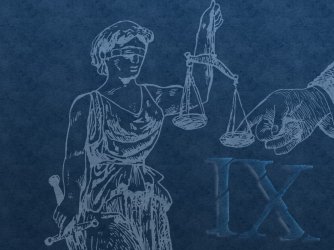
BREAKING: New Title IX regulations undermine campus free speech and due process rights
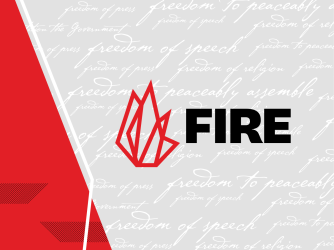

Stanford president and provost cheer free expression in open letter to incoming class
